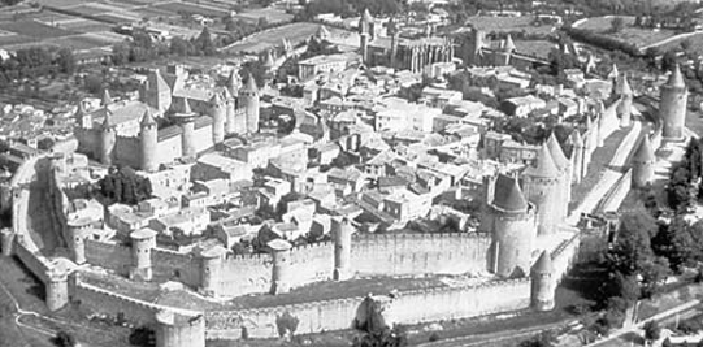Travel Reference
In-Depth Information
Medieval Carcassonne is a 13th-century world of towers, turrets, and cobblestones.
Europe's ultimate walled fortress city, it's also stuffed with tourists. At 10:00, salespeople
stand at the doors of their main-street shops, a gauntlet of tacky temptations poised and
readyfortheir daily ration ofcustomers—consider yourselfwarned.Butearly,late, oroff-
season, aquieter Carcassonne isanevocative playground foranymedievalist. Forget mid-
day—spend the night.
Locals like to believe that Carcassonne got its name this way: 1,200 years ago, Char-
lemagne and his troops besieged this fortress-town (then called La Cité) for several years.
A cunning townsperson named Madame Carcas saved the town. Just as food was running
out, she fed the last few bits of grain to the last pig and tossed him over the wall. Splat.
Charlemagne's bored and frustrated forces, amazed that the town still had enough food
to throw fat party pigs over the wall, decided they would never succeed in starving the
people out. They ended the siege, and the city was saved. Madame Carcas
sonne
-d (soun-
ded) the long-awaited victory bells, and La Cité had a new name: Carcas-sonne. It's a cute
story...but historians suspect that Carcassonne is a Frenchified version of the town's ori-
ginal name (Carcas).
As a teenager on my first visit to Carcassonne, I wrote this in my journal: “Before
me lies Carcassonne, the perfect medieval city. Like a fish that everyone thought was ex-
tinct, somehow Europe's greatest Romanesque fortress city has survived the centuries. I
wassupposedtobegoneyesterday,buthereIsitimprisonedbychoice—curledinacranny

